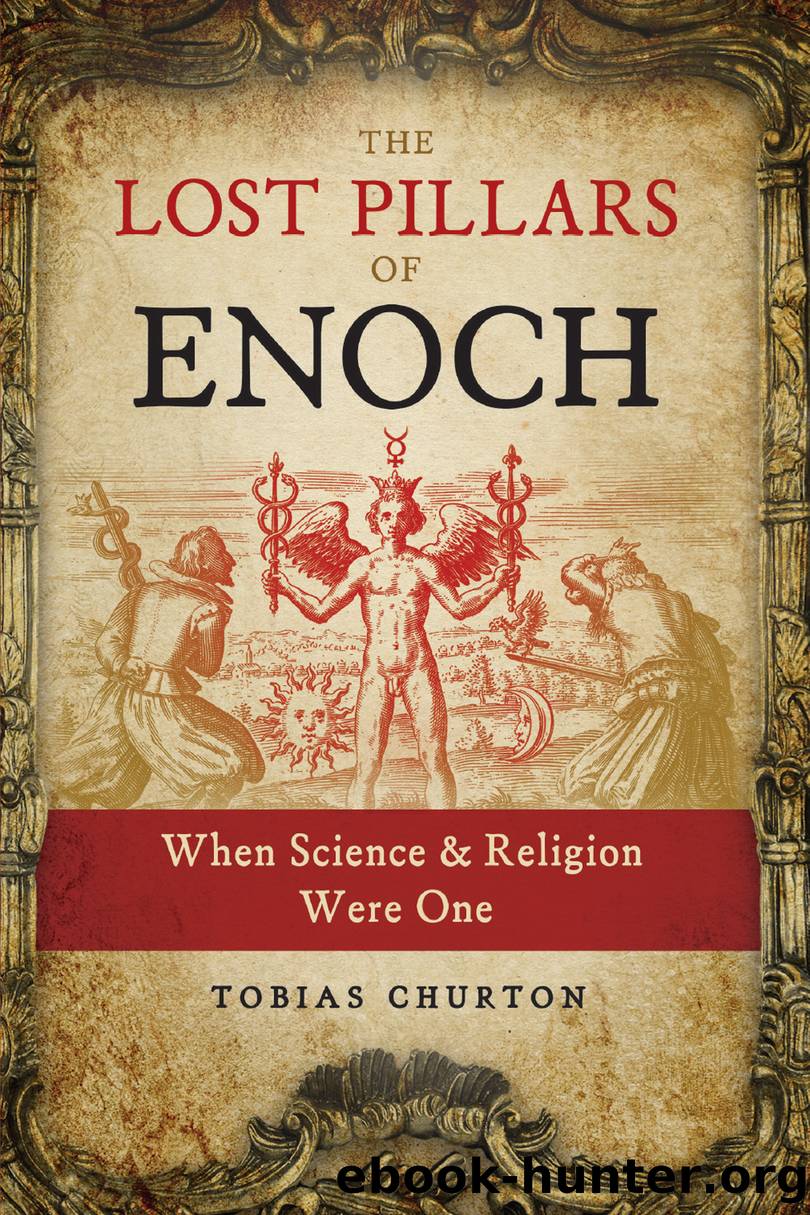The Lost Pillars of Enoch by Tobias Churton

Author:Tobias Churton
Language: eng
Format: epub
Tags: Gnosticism/Mysticism
Publisher: Inner Traditions/Bear & Company
Published: 2020-11-17T00:00:00+00:00
Fig. 11.4. Thomas Nortonâs Ordinall of Alchymy (1477)
Fig. 11.5. Thomas Nortonâs reference to âFree Masonsâ (Ordinall of Alchymy, 1477), published by Elias Ashmole in Theatrum Chemicum Britannicum (1652)
Fig. 11.6. Robert Vaughanâs engraving to accompany Ashmoleâs publication of Nortonâs Ordinall of Alchymy in Theatrum Chemicum Britannicum (1652)
Ashmole had the design engraved by Robert Vaughan (1597â1663) for the printed Theatrum Chemicum Britannicum. In Vaughanâs exquisite engraving, the master puts one bookâpossibly the Bibleâbefore the one who swears to keep secret the âdonum deiâ he has accepted. Instead of a Gothic archway we now have two distinct pillars, differently decorated and constructed, with curious inscriptions of figures and a symbol resembling a door, while an arch, flanked by lions, adjoins the capitals. The left pillar displays illogical perspective and may be hollow. There is perhaps an inner shelf in darkness (the pillar on the right is light). The pillars appear to be tilted slightly off a checkered floor that recedes to a veil, above which the dove of the Holy Spirit hovers, emanating beams of light, flanked by angels. One may speculate whether Ashmole, in altering the original manuscript design, perhaps drew on personal experience of being asked to accept a secret. The authentic meaning of acception would not then be, in the first instance, that a person is accepted, but rather that the initiate has accepted something: a significant distinction and two-way process. Having accepted, the candidate is accepted; that is, becomes acceptable (see Romans 5:2 and 12:5). The one who enters the Holy of Holies, who passes through the veil, must be acceptable to the Lord. Recall Samberâs point about true Freemasons being those who had passed the veil. Enoch âwalked with God,â acceptable to the Lord, for he accepted God, source of wisdom, and could thus approach the source (eternal life) untrammeled by the world.
The precise words exchanged by master and pupil in the engraving reappeared in 1698 in a work about the Philosopherâs Stone, THE GOLDEN AGE: Or, the REIGN of SATURN REVIEWâD,*54 in praise of the alchemical works of Eugenius Philalethes (Ashmoleâs friend Thomas Vaughan), particularly with regard to the anima mundi, the soul of the world, or âbreath of God,â which Vaughan says in his Lumen de Lumine mustânoteâbe received.
Download
This site does not store any files on its server. We only index and link to content provided by other sites. Please contact the content providers to delete copyright contents if any and email us, we'll remove relevant links or contents immediately.
The Lost Art of Listening by Michael P. Nichols(7170)
Why I Am Not A Calvinist by Dr. Peter S. Ruckman(4051)
The Rosicrucians by Christopher McIntosh(3375)
Wicca: a guide for the solitary practitioner by Scott Cunningham(3046)
Signature in the Cell: DNA and the Evidence for Intelligent Design by Stephen C. Meyer(2880)
Real Sex by Lauren F. Winner(2873)
The Holy Spirit by Billy Graham(2782)
To Light a Sacred Flame by Silver RavenWolf(2681)
The End of Faith by Sam Harris(2637)
The Gnostic Gospels by Pagels Elaine(2403)
Waking Up by Sam Harris(2334)
Nine Parts of Desire by Geraldine Brooks(2283)
Jesus by Paul Johnson(2232)
Devil, The by Almond Philip C(2207)
The God delusion by Richard Dawkins(2192)
Heavens on Earth by Michael Shermer(2191)
Kundalini by Gopi Krishna(2094)
Chosen by God by R. C. Sproul(2058)
The Nature of Consciousness by Rupert Spira(1983)
